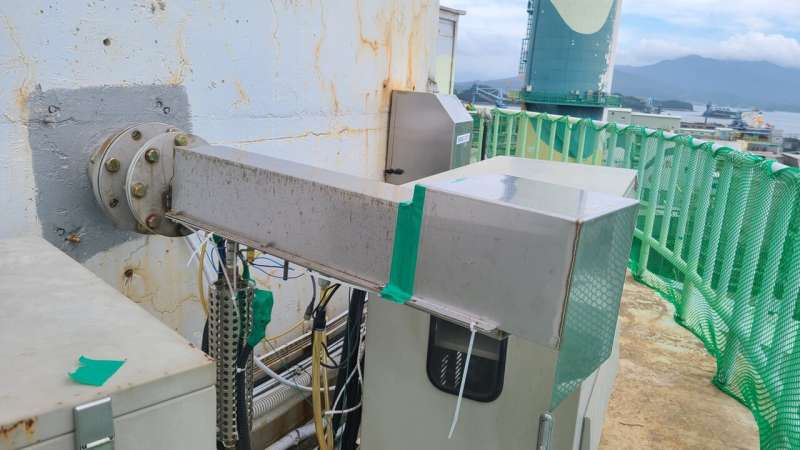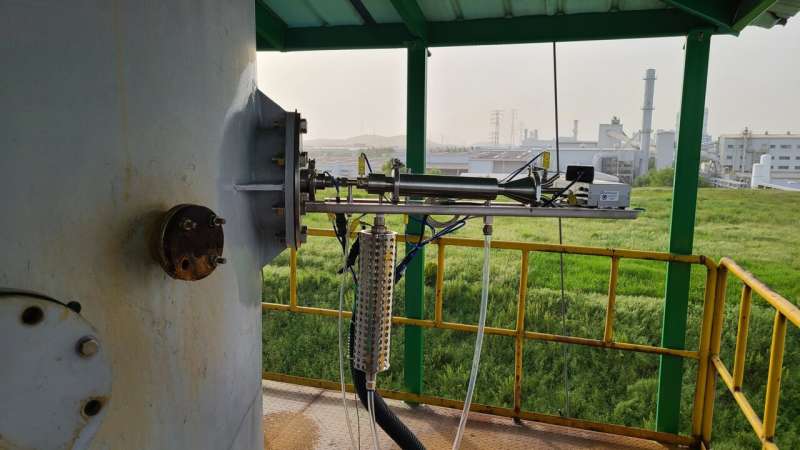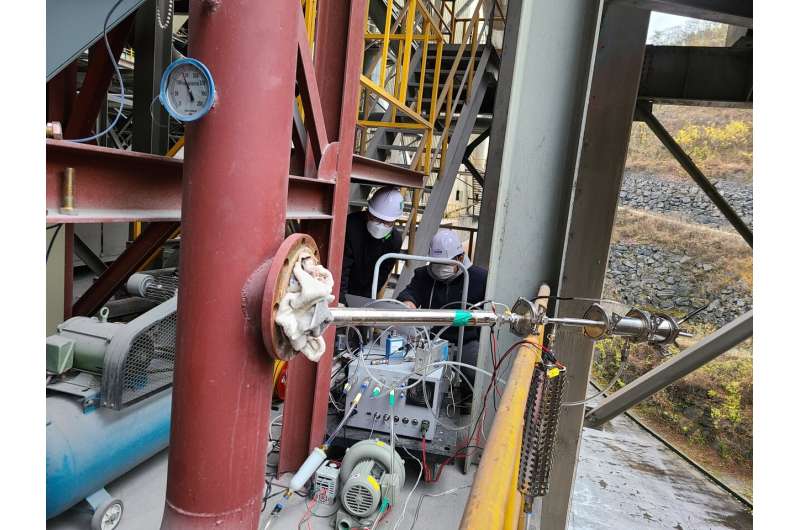This article has been reviewed according to Science X's editorial process and policies. Editors have highlighted the following attributes while ensuring the content's credibility:
fact-checked
trusted source
proofread
Korean technology lays the foundation for air quality improvement

A newly developed technology has made it possible to measure fine particle levels in challenging conditions, breaking Korea's reliance on international technologies for such measurements. This preprocessing technology enables the real-time tracking of coarse particles (PM10) and fine particles (PM2.5) emissions from thermal power plants and waste incinerators.
It is expected that the application of this innovative technology will be extended to the monitoring of fine particle emissions from both newly established and existing facilities in the future.
The research team lead by Dr. Bangwoo Han, head of the Department of Urban Environment Research of the Korea Institute of Machinery and Materials, an institute under the jurisdiction of the Ministry of Science and ICT, has developed, for the first time in the country, the technology for classifying coarse particles (PM10) and fine particles (PM2.5) particles by size and measuring them in real time.
This technology transforms the harsh conditions inside chimneys—characterized by high temperatures and high particle concentrations—into an ambient environment with room temperature and low particle concentration, enabling accurate measurement.
Leveraging the four distinct technologies developed by the KIMM's research team, it is now possible to manage emissions of coarse particles (PM10) and fine particles (PM2.5) from chimneys based on particle size rather than on the total suspended particles (TSP; the overall mass of airborne dust particles per unit volume, where the size is typically 50 micrometers or less).
These technologies include 1) iso-kinetic inlet to adapt to fluctuating gas flow rates and pressures, 2) constant sampling and dilution, 3) droplet separation, and 4) prevention of loss of particles on inner surfaces. The effectiveness of this real-time fine particle monitoring approach has been confirmed during a six-month demonstration period at various domestic power plants and incinerators.

Accurate real-time data acquisition for fine particle measurements was previously problematic because of the extreme conditions within chimneys, which include high temperatures and dense particle concentrations. The prevalent method, light transmission measurement, indirectly measures TSP quantities by assessing the reduction in light intensity after it passes through overall dust particles in the chimney. This approach has posed challenges for precise fine particle monitoring.
Conversely, the gravimetric measurement method involves quantifying the fine particles collected on a filter over a certain sampling period by measuring its weight. The prolonged time required for data collection means that this technique falls short of offering real-time fine particle management capabilities.

By utilizing the iso-kinetic inlet technology devised by the KIMM's research team, it is now possible to decelerate the velocity of the exhaust gases entering the measurement device, thereby reducing the errors in measurement that result from fluctuations in the gas flow rate inside the chimney. This advancement is essential in enabling precise measurements of fine particles.
Additionally, the research team has engineered an automatic control for dilution air injection, ensuring that a consistent volume of exhaust gas is sampled regardless of environmental variations like pressure and temperature changes within the chimney. The system also avoids the formation of condensation droplets by keeping the temperature of the device consistently high enough, and it reduces particle adhesion loss by injecting air into a porous metal tube.
Dr. Bangwoo Han, head of the Department of Urban Environment Research of the KIMM, commented, "We have developed a first-of-its-kind technology that allows for the accurate determination of both the concentration and size distribution of fine particles from chimneys in real time. Based on the concentration data of fine particles measured in the fields, we will strive to establish a comprehensive management system for fine particle emission sources."
This research was facilitated by the project for the "demonstration of technologies for continuous measurement of fine particles emitted from facilities by using multi-stage dilution sampling" implemented by the Ministry of Environment. This technology has been selected by the Ministry of Environment as one of the "2023 Top 20 Excellent Environment-related R&D Accomplishments."

















